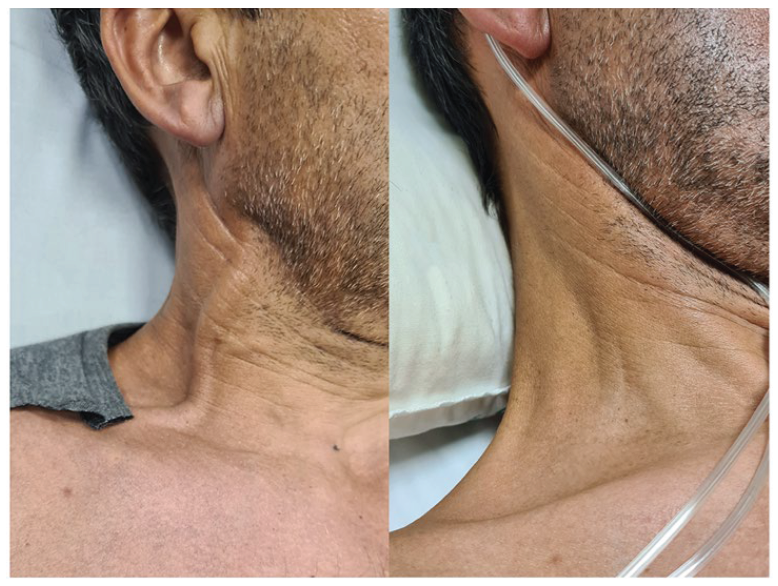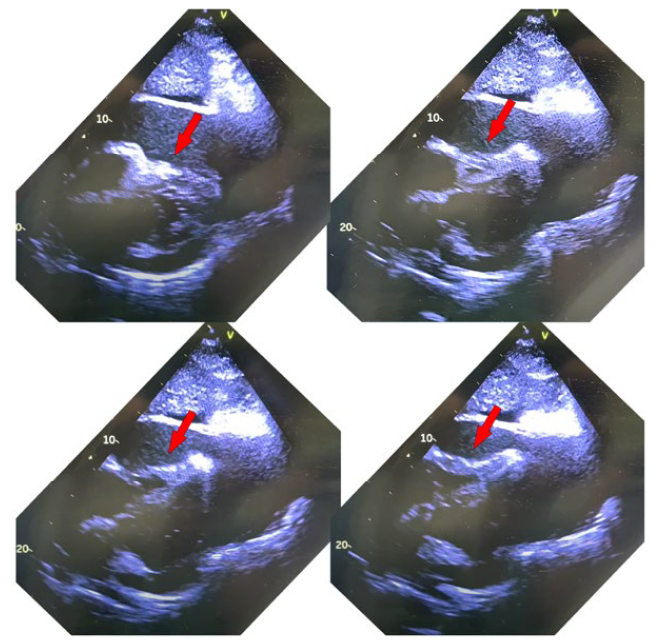Cardiac tamponade is a critical medical condition characterized by dysfunction of cardiac filling due to increased diastolic pressure. This phenomenon may occur due to a pericardial effusion. The increased pressure resulting from this condition may lead to hypotension, muffled heart sounds, and jugular venous distension (JVD), signs that compose the Beck triad.
We present a case of a 51-year-old male with advanced lung cancer who sought urgent medical attention for dyspnea that developed for one week and thoracalgia that started on the present day. The patient was obtunded, and hyperhidrotic, with a blood pressure of 89/56 mmHg and a heart rate of 134 bpm. A meticulous examination revealed marked JVD at 45º (Fig. 1), as well as muffled heart sounds, classic signs of this condition.1Swift echocardiography subsequently confirmed the diagnosis of cardiac tamponade (Video 1, Fig. 2) by revealing the presence of pericardial effusion and compressed right cardiac chambers during diastole. The patient was promptly subjected to a pericardiocentesis, which drained 700 cc of serohemorrhagic fluid. During the procedure, the patient improved this hemodynamic profile, normalizing the arterial pressure as well as cardiac frequency.

Figure 1: A) Jugular venous distension in a patient with cardiac tamponade; B) Absence of jugular venous distension 24 hours after drainage of the pericardial effusion.
Video 1: Cardiac tamponade
Video 2: Post-pericardiocentesis

Figure 2: Echocardiogram showing evidence of a large volume circumferential pericardial effusion with compression of the right ventricle in diastole (cardiac tamponade), shown with red arrow.
This illustrates the main findings of cardiac tamponade, presenting an example of jugular venous distention with Fig. 1 A, a finding that results from compromised right ventricular filling, stemming from pericardial effusion-induced pressure on the heart chambers.1,2Echocardiography played a crucial role in confirming the diagnosis by presenting both the pericardial effusion and demonstrating the collapsibility of the right ventricle during diastole, confirming the diagnosis of cardiac tamponade. In summary, this case underscores the importance of recognizing clinical findings associated with cardiac tamponade, such as JVD and hypotension, and emphasizes the pivotal role of echocardiography in confirming the diagnosis. Timely pericardiocentesis intervention is indispensable for restoring cardiac function and ultimately enhancing patient outcomes.1















